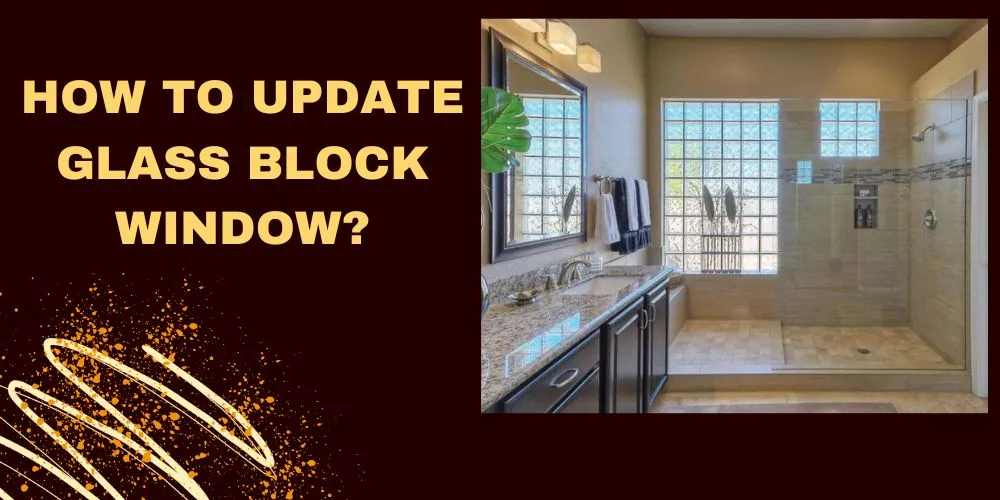Have you ever walked across your floor, only to look down and see a mysterious layer of black grime on the soles of your feet?
You’re not alone – this is a common issue many people face, and it can be both puzzling and frustrating.
In fact, I also used to wonder why does my floor make my feet black?
I researched about it to find the answer, and today I have decided to share that with you all as well.
So what exactly is causing this unsightly mess, and more importantly, how can you prevent it?
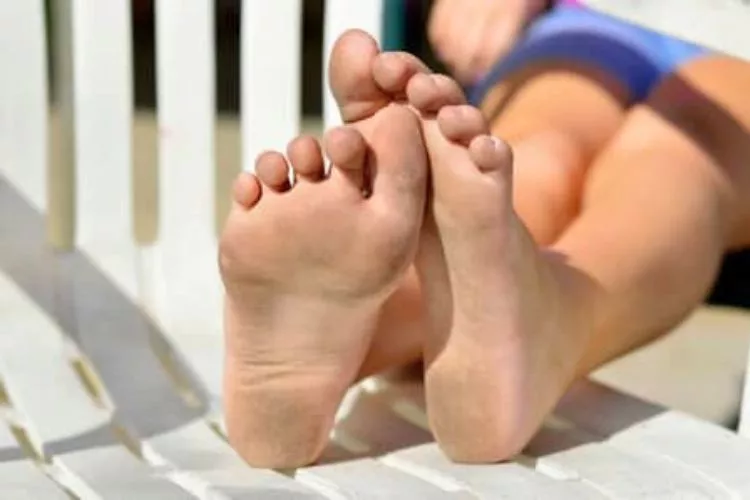
In this article, I will delve into the floor grime, uncovering the reasons behind those dirty footprints and providing expert insights on how to keep your floors and feet squeaky clean.
Quick Recommendations
Last update on 2025-08-01 / Affiliate links / Images from Amazon Product Advertising API
Why does my floor make my feet black?
A floor can make your feet black due to accumulated dirt, dust, and grime on its surface. This can be caused by inadequate cleaning, outdoor debris being brought indoors, and wearing shoes inside the house.
Additionally, certain flooring materials, like hardwood and vinyl, can leave residue on your feet. Regular and thorough floor cleaning can help prevent this issue and maintain a cleaner living environment.
The Perils of Dirty Floors
One of the most obvious reasons for blackened feet is dirty floors. Dust, dirt, and grime accumulate over time, especially in high-traffic areas.
Therefore, regular sweeping, vacuuming, and mopping are essential to keep your floors clean and prevent the buildup of dirt that can lead to blackened feet.
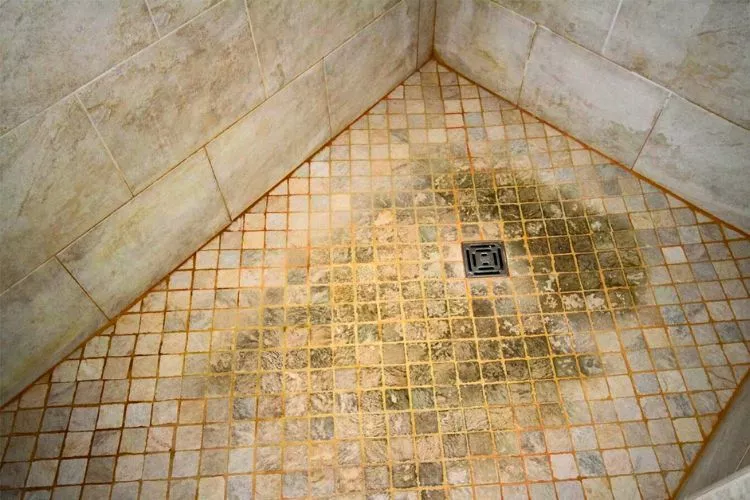
Wood Floor Sealers: A Hidden Culprit
If you have wood floors, the sealer or finish used on them may contribute to the problem. Some sealers can break down over time, leaving a residue that can transfer onto your feet.
To resolve this issue, consider refinishing your wood floors with a high-quality sealer less prone to degradation.
The Trouble with Worn-Out Floor Mats
Floor mats are designed to trap dirt and debris, keeping your floors cleaner. However, as they become worn out and saturated with dirt, they can start to contribute to the problem rather than solving it.
Regularly cleaning or replacing your floor mats can help keep your floors cleaner and prevent blackened feet.
The Dirty Mop and Bucket Dilemma
Using a dirty mop and bucket to clean your floors can worsen the problem. When you mop with dirty water, you simply spread the dirt around rather than remove it.
To avoid this issue, frequently change the water in your bucket and clean your mop after each use.

Walking Barefoot: A Double-Edged Sword
While walking barefoot can feel liberating, it can also contribute to blackened feet. The natural oils on your skin can attract dirt and dust, which then transfer onto your floors. Wearing socks or slippers indoors can help minimize the transfer of dirt onto your floors and keep your feet cleaner.
Laminate’s Nature: An Unexpected Factor
Laminate flooring is designed to be durable and easy to maintain, but its nature can sometimes contribute to blackened feet. The wear layer of laminate flooring can become scuffed or scratched, allowing dirt to become trapped in these imperfections.
Regular cleaning and using furniture pads to prevent scratches can help maintain the integrity of your laminate floors and prevent dirt buildup.
Tips to Prevent Black Feet on Floors
black feet on floors can be a source of embarrassment when guests or clients visit your space.
Taking steps to prevent black feet on floors will improve your space’s appearance and contribute to a healthier environment for everyone.

Use doormats: Place doormats at all entrances to your home or workspace to capture dirt, dust, and debris from shoes before they make their way onto your floors.
Remove shoes: Encourage family members, guests, and coworkers to remove their shoes upon entering your space. This can significantly reduce the amount of dirt and grime tracked onto your floors.
Regular cleaning: Sweep, vacuum, or mop your floors regularly to remove dirt and dust. Clean under furniture and in corners, where dirt can accumulate.
Deep clean periodically: Schedule a deep cleaning of your floors every few months to remove stubborn dirt and grime that regular cleaning may not eliminate.
Choose appropriate cleaning products: Use products specifically designed for your type of flooring. Avoid using harsh chemicals that can damage your floors and leave residue behind.
Protect high-traffic areas: Consider using area rugs or floor mats in high-traffic areas to protect your floors from excessive wear and tear, which can lead to dirt accumulation.
Maintain your flooring: Properly maintain your floors by sealing or refinishing them as needed, according to the manufacturer’s recommendations. This can help prevent dirt from becoming ingrained in the flooring material.
Why does my vinyl floor make my feet black?
Vinyl flooring, while durable and low-maintenance, can sometimes cause your feet to turn black due to a combination of factors. One possible reason is the dirt, dust, and grime accumulation on the floor’s surface.
This can result from inadequate cleaning or dirt being brought into the house from outdoors. To address this issue, it’s essential to regularly sweep, vacuum, or mop your vinyl floors to remove dirt and debris.
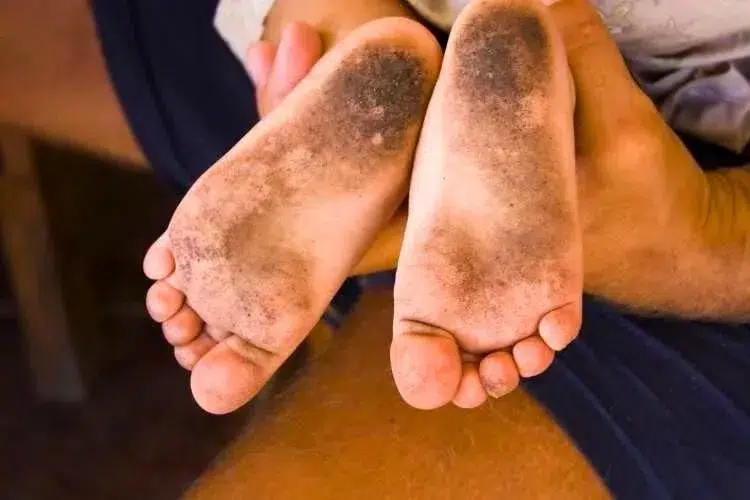
Another possible cause is the wear and tear of the vinyl flooring itself. Over time, the wear layer of the vinyl floor can break down, leaving behind a residue that can transfer to your feet.
To prevent this, use appropriate cleaning products specifically designed for vinyl floors, as harsh chemicals can damage the wear layer.
Additionally, consider using floor mats or area rugs in high-traffic areas to protect the vinyl flooring from excessive wear and tear.
Laminate floors turning feet black?
Laminate flooring, while known for its durability and affordability, can sometimes cause your feet to turn black due to a few factors. One common reason is the dirt, dust, and grime buildup on the floor’s surface.
This can occur when the floor isn’t cleaned regularly or when dirt is tracked inside from outdoors. To prevent this, it’s important to sweep, vacuum, or mop your laminate floors regularly, ensuring that you use cleaning products specifically designed for laminate flooring.
Another possibility is the wearing down of the protective layer on the laminate floor. Over time, this protective layer can become damaged or worn, causing the underlying material to release a residue that sticks to your feet.
To avoid this issue, use gentle cleaning products suitable for laminate floors and avoid abrasive cleaning tools that can damage the protective layer. Protect high-traffic areas with area rugs or floor mats to minimize wear and tear on your laminate flooring.
Regular maintenance, such as promptly addressing scratches or damage, can also help keep your laminate floors in good condition and prevent them from turning your feet black.
Why do I feel like my house is dirty even after I clean?
Feeling like your house is still dirty even after cleaning can be attributed to several factors:
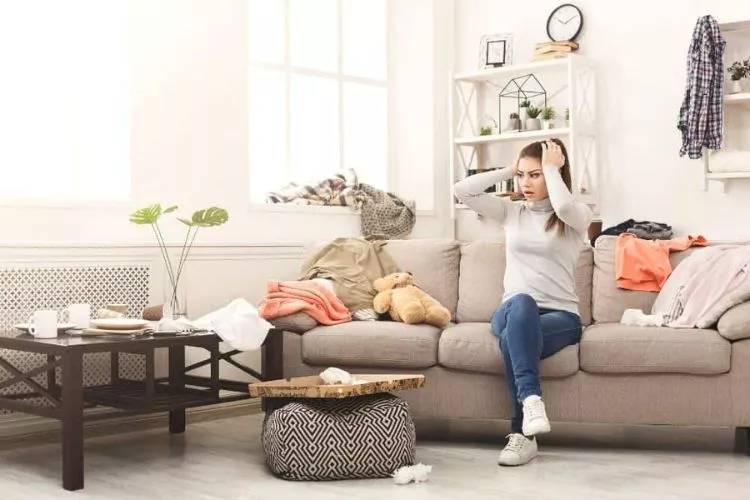
Ineffective cleaning methods: Using improper cleaning techniques or tools may not effectively remove dirt and grime, leaving your house feeling unclean. Ensure you use appropriate cleaning products and tools for different surfaces and materials in your home.
Clutter and disorganization: A cluttered or disorganized space can make your house feel dirty, even if it’s been cleaned. Declutter and organize your belongings to create a more visually appealing and tidy environment.
High-traffic areas: Some areas of your home may accumulate dirt and dust more quickly due to frequent use. Pay extra attention to these high-traffic areas to ensure they stay clean.
Hidden dirt and dust: Dirt and dust can accumulate in hard-to-reach or overlooked areas, such as under furniture, behind appliances, and corners. Make sure to clean these areas regularly to maintain a clean home.
Air quality: Poor indoor air quality can contribute to a feeling of dirtiness in your home. Ensure proper ventilation, use air purifiers, and regularly clean air filters to improve air quality.
Odors: Lingering odors can make your house feel unclean even if surfaces are spotless. Identify and address the sources of unpleasant smells, such as pet odors or mold, and use air fresheners or natural solutions like baking soda to neutralize odors.
Psychological factors: Sometimes, the feeling that your house is still dirty can be due to stress, anxiety, or perfectionism. Recognizing when your house is genuinely clean and finding ways to manage these emotions to feel more at ease in your space is essential.
Addressing these factors and maintaining a regular cleaning schedule can create a cleaner and more comfortable home environment.
Guide to Deep Cleaning Your Floors
Deep cleaning your floors is essential to maintaining a clean and healthy living environment. Over time, dirt, grime, and stains can accumulate on your floors, dulling their appearance and potentially damaging the flooring material.
Regularly cleaning your floors can enhance their look, prolong their lifespan, and create a more hygienic space for you and your family.
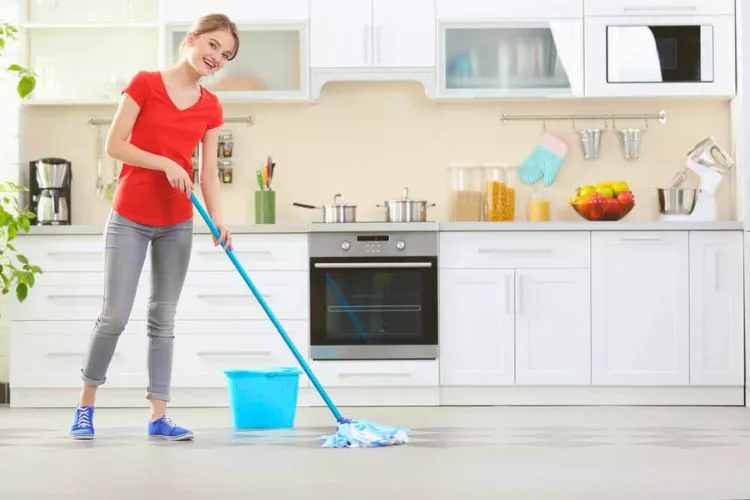
Identify the Type of Flooring
Before you begin the deep cleaning process, it’s crucial to identify your home’s flooring type. Different flooring materials require specific cleaning methods and products to avoid damage.
Common flooring types include hardwood, laminate, vinyl, tile, and carpet.
Necessary Equipment and Cleaning Solutions
For this guide, we will focus on deep cleaning [specify the type of flooring]. To effectively deep clean your floors, you’ll need the following equipment and cleaning solutions:
- [choose the appropriate cleaning solution] specifically designed for [flooring type]
- A broom, vacuum, or dust mop for pre-cleaning
- A mop or scrub brush
- A bucket for mixing the cleaning solution
- [Optional: a steam cleaner for a more thorough deep clean]
- Pre-Cleaning Steps
Before deep cleaning your floors, removing any loose dirt, dust, and debris is essential. Use a broom, vacuum, or dust mop to thoroughly clean the surface of your floor. Ensure to get into corners and under furniture to remove any hidden dirt.
Selecting the Right Cleaning Solution
The appropriate cleaning solution for your floor type is crucial to avoid damaging the material. [Choose the appropriate cleaning solution] specifically designed for [flooring type] to ensure the best results.
Then, follow the manufacturer’s instructions for mixing the cleaning solution with water in a bucket.
Deep Cleaning the Floor
- Dip the mop or scrub brush into the cleaning solution and wring out excess water. The mop or brush should be damp but not soaking wet.
- Begin mopping or scrubbing the floor, working in small sections. Make sure to cover the entire surface area, paying extra attention to high-traffic areas and any remaining stains.
- If using a steam cleaner, follow the manufacturer’s instructions and ensure the steam cleaner is compatible with your flooring type.
- Allow the floor to air dry completely. Avoid walking on the floor until fully dry to prevent slipping or tracking dirt onto the freshly cleaned surface.
Maintaining Cleanliness and Shine
After deep cleaning your floors, maintain their cleanliness and shine. Regularly sweep, vacuum, or mop your floors to remove dirt and dust.
Place doormats at entrances to capture debris from shoes and encourage family members and guests to remove their shoes before entering your home.
How to Identify and Fix Floor Damage Contributing to Black Feet?
In addition to regular cleaning, addressing any floor damage is an essential step in preventing black feet. If the protective layers of your flooring materials are compromised, dirt and grime can become trapped, causing more noticeable residue on your feet.
Identifying and fixing such damage can significantly improve your floor’s cleanliness and prevent blackened feet.
Wood Floors: Checking for Wear and Tear Wood floors are prone to wear and tear, especially in high-traffic areas. Scratches, scuff marks, and faded finish can leave behind residues that transfer to your feet.
If you notice uneven spots or dull areas, it might be time to refinish your floors. Refinishing involves sanding down the old finish and applying a fresh coat to restore the protective layer, ensuring a cleaner surface that resists dirt buildup.
Vinyl and Laminate Floors: Preventing Scratches and Peeling Vinyl and laminate floors are durable but can still suffer from scratches and peeling, which can trap dirt. For vinyl, ensure that you use non-abrasive cleaners, as harsh chemicals can break down the protective top layer.
Similarly, laminate floors can lose their protective coating over time, which may cause dirt to accumulate in the exposed areas. To fix this, you can apply a laminate floor sealer designed to protect the surface and reduce the likelihood of dirt trapping.
Addressing Floor Gaps and Seams Over time, floor seams can start to separate, especially in laminate or vinyl floors, which can allow dirt to accumulate in the gaps.
These gaps can also create a path for moisture to get under the floor, leading to further damage. Consider using a caulking or gap filler to close up any large gaps and prevent dirt from getting trapped beneath the floor surface.
This section complements the existing content by focusing on how to prevent dirt buildup caused by flooring damage, which ties into maintaining clean floors and avoiding black feet.
Conclusion:
Several factors can cause your floor to make your feet black, ranging from dirt accumulation to wear and tear of the flooring material.
Understanding the potential causes and implementing proper cleaning and maintenance techniques can minimize the likelihood of experiencing this issue in your home.
Regular cleaning, using appropriate cleaning products, and addressing high-traffic areas will prevent your feet from turning black and contribute to a cleaner, healthier living environment.
Additionally, recognizing the importance of maintaining your flooring can help prolong its lifespan and enhance the overall appearance of your home.




